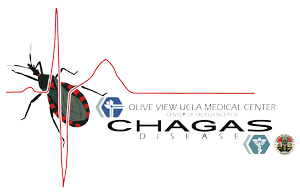
Diagnosis of Chagas
Diagnosis of Chagas disease differs depending on the phase of the disease. It is very rare to encounter acute cases, since acute symptoms are easily confused with flu-like illnesses and seldom associated with triatomines. Diagnosis typically occurs during the chronic phase.
It is estimated that >99% of patients are unaware they have the infection, which is why we recommend routine screening for adults who have lived in endemic Latin American countries. Other groups, such as people who spend significant time camping/hunting/working outdoors in endemic states of the southern U.S. might also benefit from screening.
Acute phase: In the acute phase, which lasts 2-4 weeks after the initial infection, Trypanosoma cruzi can be observed swimming freely in the bloodstream. Diagnosis can be made by observing the parasite under a microscope in a blood smear.
Chronic Phase: Different strains of T. cruzi, differential immune responses to infection, and variable levels of antibodies during the chronic phase can make Chagas disease challenging to detect. There is no single gold standard assay. Rather, the World Health Organization recommends diagnosis of Chagas disease with two serologic assays of different types. Performance of different types of assays are described in a study by Otani and colleagues (provide link). Some of the most commonly used assays are:
Rapid assays
- InBios has an FDA-approved product

CENTER OF EXCELLENCE FOR CHAGAS DISEASE
FOLLOW US